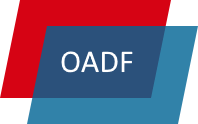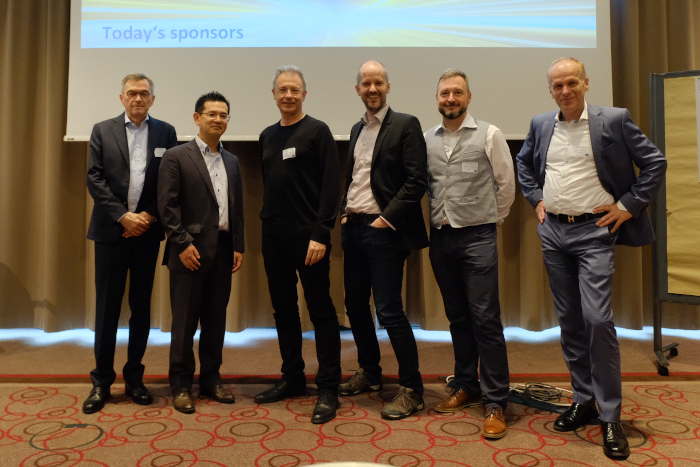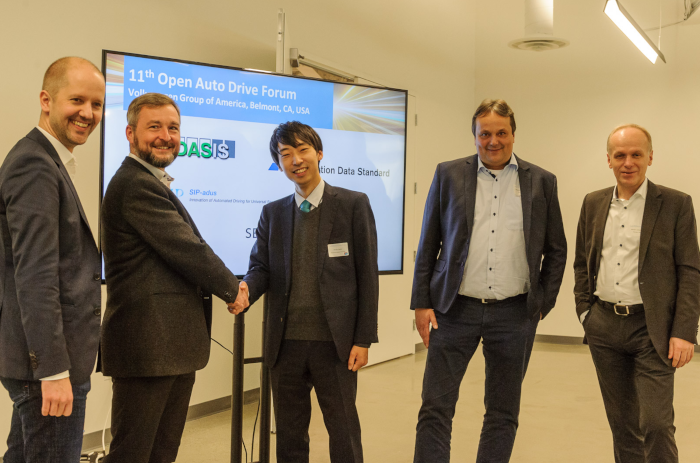June 24 marked the successful completion of the 20th Open Auto Drive Forum (OADF) meeting. Below is short recap of the meeting.
Welcome Notes and Introduction
The meeting began with a warm welcome from Steffen Kuhn (Elektrobit), the OADF spokesperson, who gave an overview of the forum’s organizational structure, mission, achievements, and plans for the future. The mission of the OADF is to make driving automation safe, economic and comfortable by developing standards for the exchange and processing of map-related information.
Collaborative Insights into ADASIS and NDS Applications
The first major session, “Beyond Boundaries: Collaborative Insights into ADASIS and NDS Applications” featured Jean-Charles Pandazis (ADASIS), Martin Pfeifle (NDS), Fabian Klebert (NDS) and Clemens Wandt (ADASIS). The speakers gave a brief introduction to ADASIS with its released White Paper and NDS, presented the NNG application IGO.AHEAD using both standards, illustrated the NDS.Live path concept, and highlighted ADASISv3 and potential synergies with NDS.Live.
Harmonizing Data Standards for Real-Time Traffic Information
Matthias Unbehaun (TISA) and Andras Csepinszky (SENSORIS) chaired the session on “TISA and SENSORIS: Upstream-Downstream Data Standard Harmonization for Timely and Trustworthy Real-Time Traffic Information Services”. They presented the progress of the Joint Harmonization Task Force, which was set up at the end of 2023 with the aim of using SENSORIS data to create dynamic updates for TPEG services. High-priority use case at the moment is e-call validation, where passing-by SENSORIS equipped vehicles are used to verify the event, thus help sparing valuable resources for emergency responders in that they do not need to be dispatched if an e-call is identified as false alarm. Other use cases to be discussed are end-of-queue, SRTI related adverse weather events, obstacles on the road, road infrastructure issues and the protection of vulnerable road users.
Standardization Activities and Plans
The session on standardization activities featured several notable speakers:
- Satoru Nakajo (University of Tokyo) gave an insight into the SIP-adus project in Japan, namely the Mobility Innovation Alliance Japan and the 3rd phase of SIP-adus aiming at a smart mobility platform.
- Kohei Taguchi (DMP) gave an overview of Dynamic Map Platform Co., Ltd. and their project on map updating using probe data.
- Christian Kleine (HERE) discussed TN-ITS and efforts to provide fresher map data for intelligent transport services.
- Andras Csepinszky, Co-Chair of SENSORIS and Advanced Automotive Technology Director of NNG, reported on the latest SENSORIS version 1.6 and the planning for SENSORIS 2.0.
- Yash Shah (ASAM) gave an update on ASAM’s latest developments in automotive standards.
Data for Road Safety
In the afternoon session, Mohanad Ismail (WSP UK) discussed the Data for Road Safety initiative, which aims to provide safety-related traffic information across brands and borders. This session highlighted the importance of data sharing and collaboration in improving road safety.
Final Remarks
Overall, the 20th OADF meeting was a resounding success, providing valuable insights into the latest advances and collaborative efforts in the OADF. The event highlighted the importance of harmonized data standards using digital maps for the future of driving automation.


